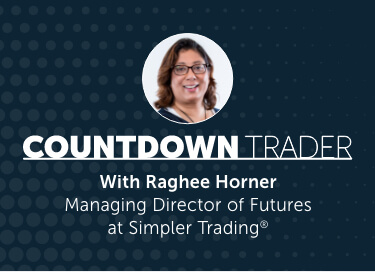How to use the Dow 123 Continuation Pattern
Hey Traders,
So often we look for the “latest and greatest” ways to measure what’s happening in the markets (like patterns). New stuff can be great but don’t forget about the “old stuff,” The things that have been working for decades! To be more exact, they’ve been working for nearly one and a half centuries, you may be familiar with this name… does Dow ring a bell?
Today, we’re gonna talk about the Dow 123 Continuation Pattern. There are two parts to this pattern, a reversal pattern and a continuation pattern.
Let’s start by talking about continuation…
A lot of traders are not aware of, nor do they know these patterns of continuation work on intraday time frames, weekly time frames, end of day time frames, and across every market. The pattern identifies a shift in psychology. This is where a lot of traders get caught up in the wrong side of the momentum because they don’t know how to identify this shift.
Let’s look at an example.
In this chart, the market was clearly moving higher before the trend broke. The 34 EMA wave was broken when we started plotting blue and red GRaB candles.
We now need to wait for a lower low. How do we identify a lower low? It’s a three candle pattern, which requires the lower low to be surrounded by two higher lows.
See the chart below.
Once we have that level in, as long as we don’t exceed this lower low, that’s going to be,
what’s known as the number 1 point of the Dow 123.
As the market continues to move higher, we’re waiting patiently again for another pattern. It’s actually the opposite pattern of what we just looked at. It’s called a minor high, which is a higher high surrounded by two lower highs. It’s also known as a swing high in this pattern.
This is known as the number 2 point of the Dow 123.
Now we’re waiting for the market to retrace. Ideally, I like to see the market retrace about 50% of the range from point 1 to point 2. That’s ideal.
How can you measure a 50% retracement?
You can use a Fibonacci retracement tool from the low to the high. That means we’re looking to see the market get down to about half way between point 1 and point 2. In this example that’s about $310.70. Once the market does that, we can solidify the fact that the pattern is actually starting to form.
This retracement is the most important level of the pattern. It’s the swing high that’s been left behind. Once that swing has been left behind, we actually now have our breakout point, which is really the whole point of this pattern.
Are there ways to further confirm that breakout point?
Sure, we can use Darvis levels, we can use volume ledges, we can use major psychological levels. There’s a lot of other things we can use to further stack the importance of that swing high, but let’s just stick strictly with the pattern. As the market bounces up off that low, it does not matter if we chop around a little bit, as long as we do not make a lower low.
The number 1 low point remaining intact is extremely important.
The other decision level is that swing high. Until this market breaks the swing high or that number 2 point, there’s really nothing to do. This is a momentum setup.
Once that level is broken, we’re basically seeing the sentiment of bullishness essentially unleashed on the market. We’re rushing up towards that level and when we breach that level, we then look for continuation. That’s our breakout point.
We are looking for acceleration. In this case, a high that’s just above $324.20. This is the purpose of the Dow 123.
This is how this pattern works as a continuation, the Dow 123.
This is again, what it looks like…
The low, the lower low, the swing high, the retracement, and finally the breach. When you trade enough of these, you’ll notice that there’s certain patterns that occur that tend to increase the probability of a good 123 continuation pattern.
One of my favorite criterias is how long does the pattern take to form? I don’t want to see this pattern take more than about 21 candles to form or 21 sessions or 21 bars. I’m not counting calendar days because that would include the weekends and holidays.
I’m talking about actual trading sessions. I don’t want it to take more than 21 sessions and I don’t want it to be smaller than 10 sessions. In this example, there were 19 candles or sessions so it is within the 10-21 session rule.
Now that we’ve covered continuation, make sure to catch Countdown Trader again next week when we’ll be talking about the reversal of the Dow 123 pattern.
In the meantime, make sure to join us at Sector Secrets Mastery to put your knowledge to work.



